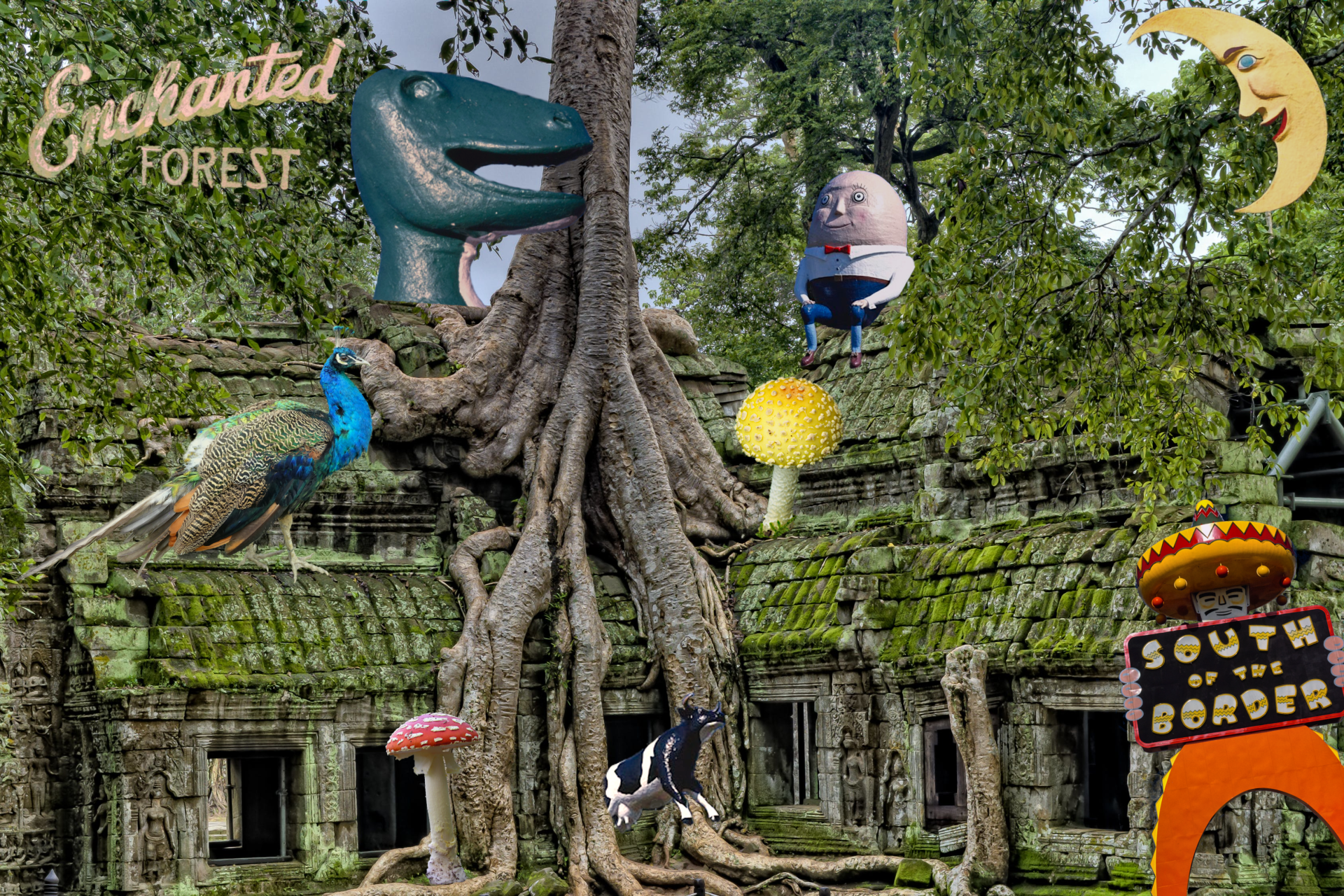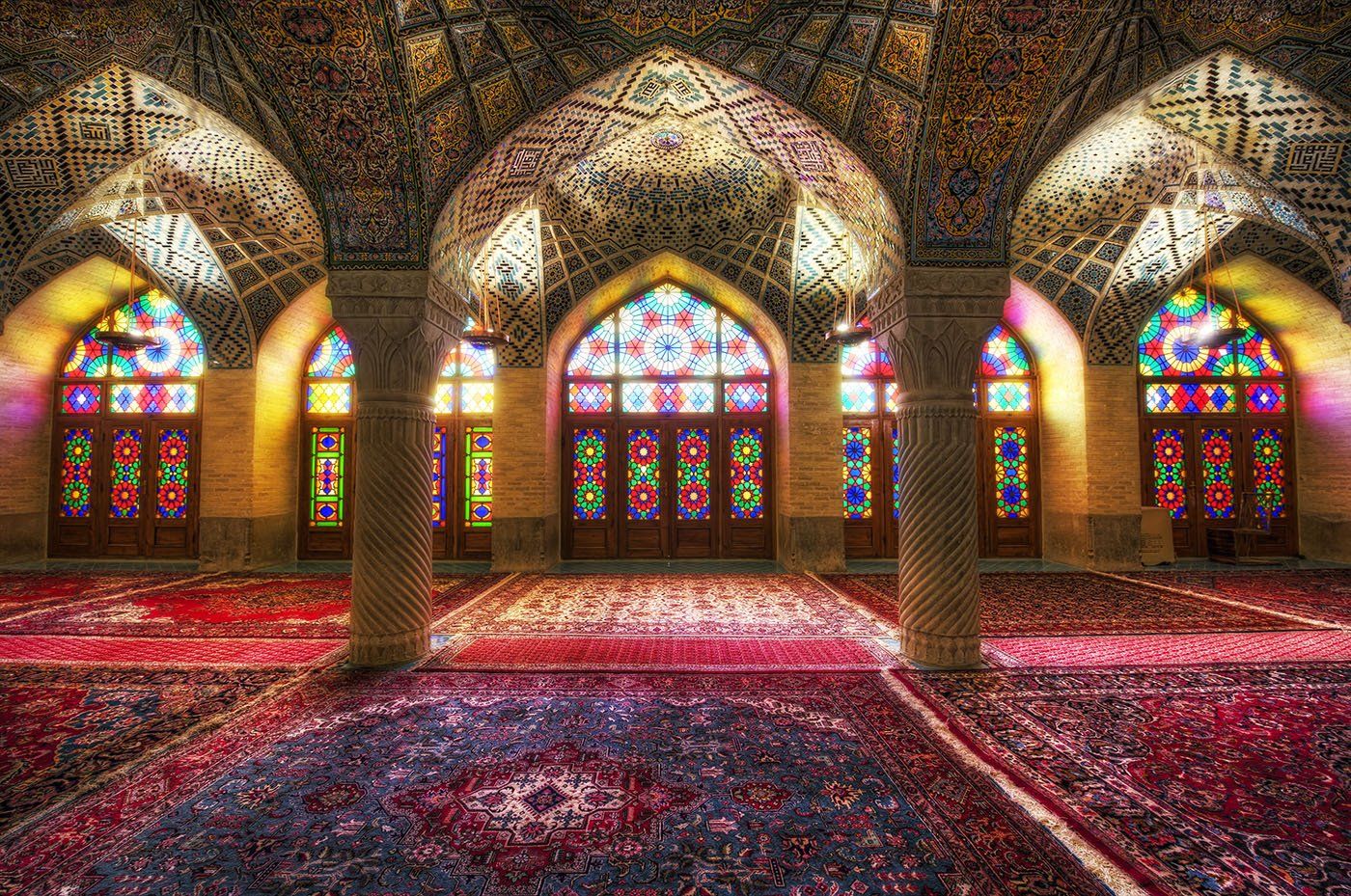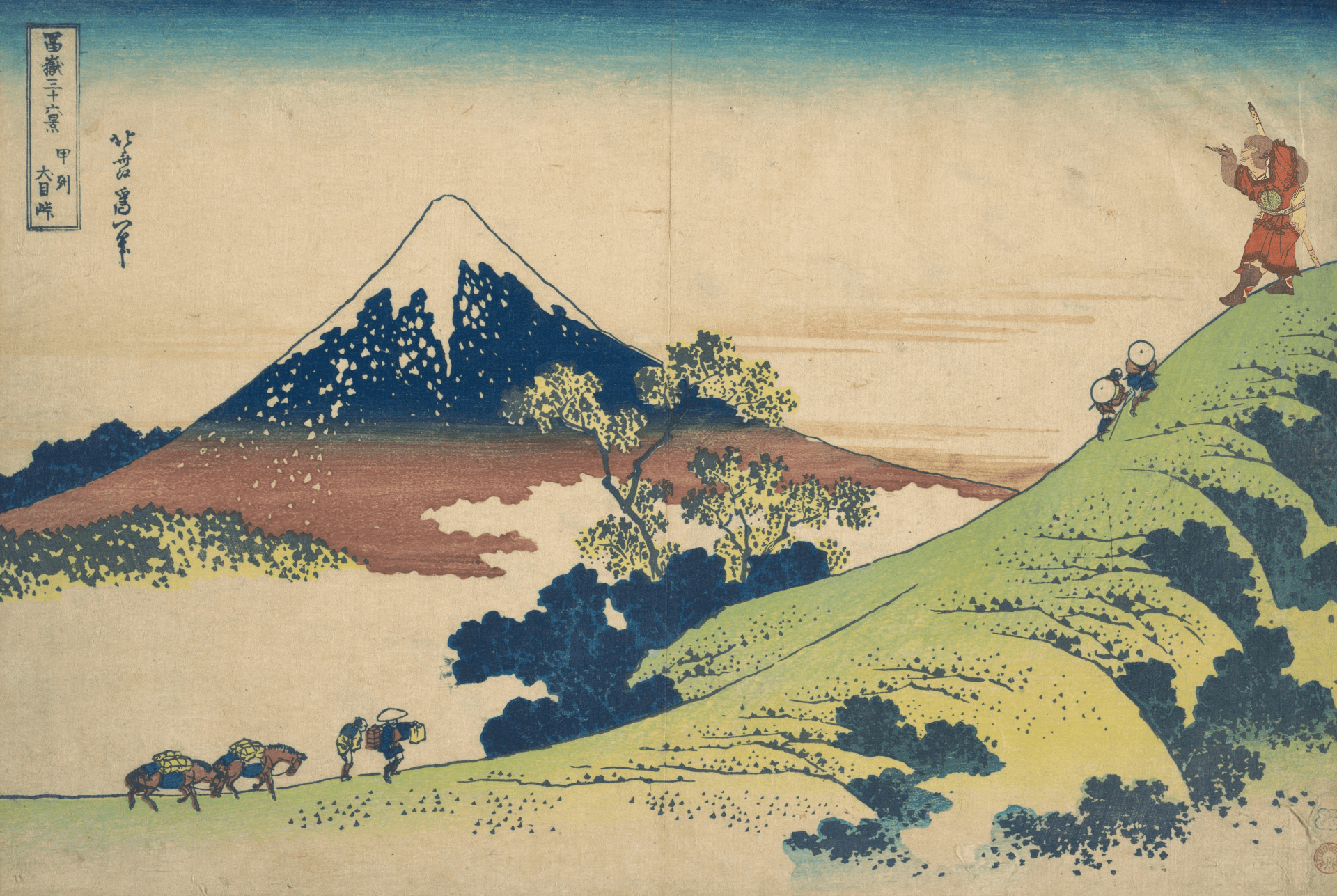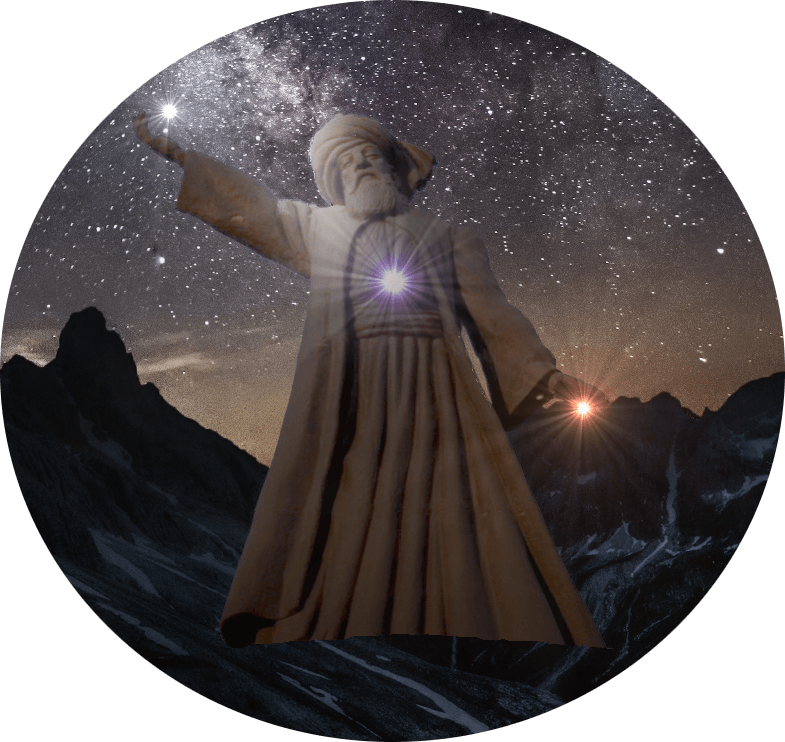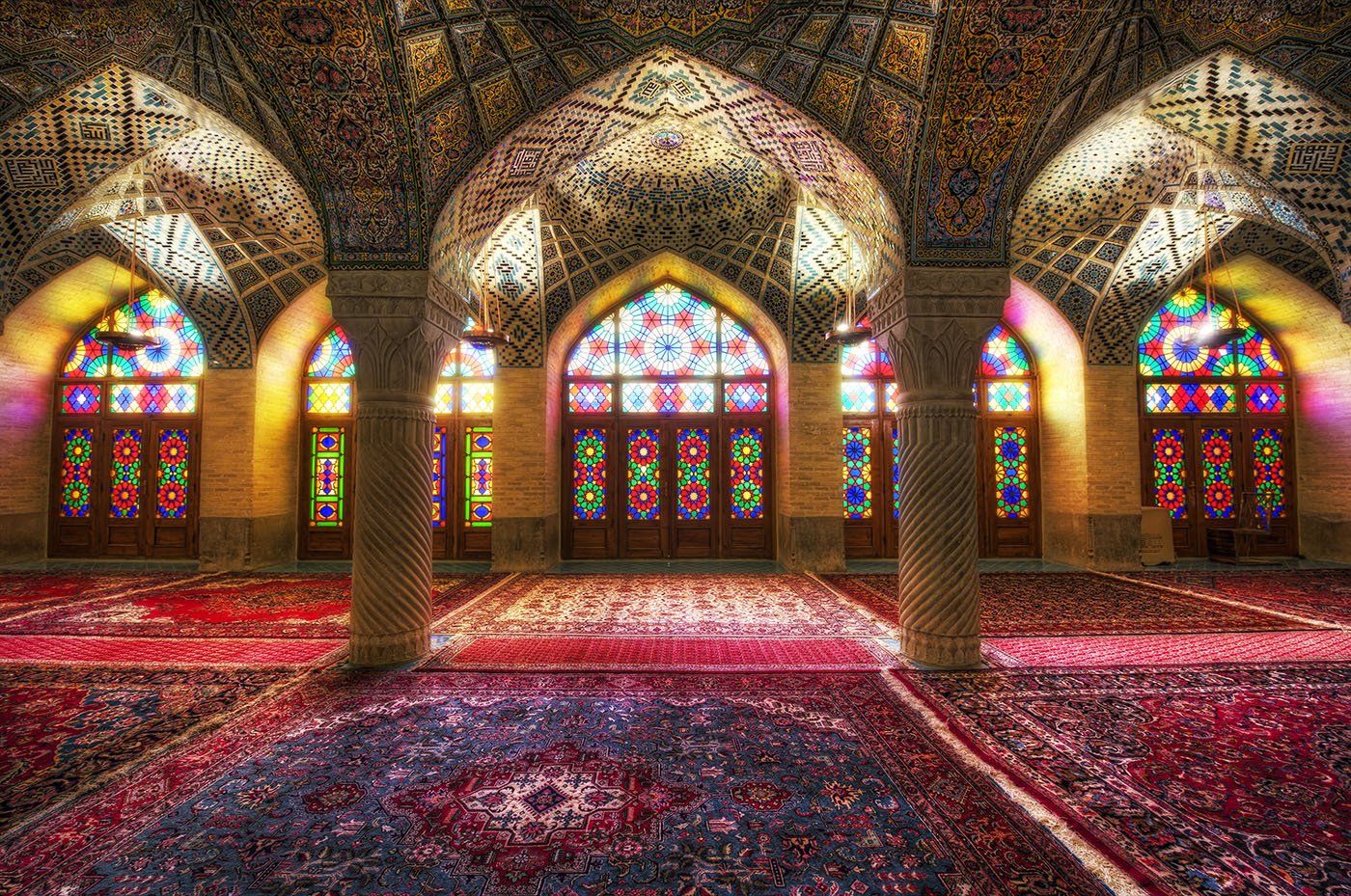
Medicine of High Price
George Gurdjieff, whose name sounds and resounds often in these halls, had this to say about art:
"'I do not know what you are talking about,' said G. 'We have different standards: I measure the merit of art by its consciousness and you measure it by its unconsciousness. We cannot understand one another. A work of objective art ought to be a "book" as you call it; the only difference is that the artist transmits his ideas not directly through words or signs or hieroglyphs, but through certain feelings which he excites consciously and in an orderly way, knowing what he is doing and why he is doing it.' ...
"'So you see that art is not merely a language but something much bigger. And if you connect what I have just said with what I said earlier about the different levels of man's being, you will understand what is said about art.' ...
"'To define what I call objective art is difficult first of all because you ascribe to subjective art the characteristics of objective art, and secondly because when you happen upon objective works of art you take them as being on the same level as subjective works of art.' ...
"'[I]n objective art the artist really does "create," that is, he makes what he intended, he puts into his work whatever ideas and feelings he wants to put into it ... In subjective art everything is accidental. The artist, as I have already said, does not create; with him "it creates itself." This means that he is in the power of ideas, thoughts, and moods which he himself does not understand and over which he has no control whatever.'"
Ouspensky, In Search of the Miraculous
Indeed, in these halls have I sounded that theme ever and again, sometimes subtly, sometimes less so -- but here, in this innermost chamber, most of all.
Last night, I was listening to a Greek Byzantine Orthodox chant, "Agni Parthene," a hymn of praise and supplication to Mary. I had found it a few days ago.
It was beautiful, of course.
Whoever had placed the recording online had included the text in Greek and in English, which showed up on screen in time with the chanting, while the background of the video was an Orthodox icon of Mary with the child Jesus by her side.
I don't know what was making me cry more -- the singing, or the look on Mary's face.
She's beautiful, of course.
But it's those eyes -- unspeakable sorrow, subtle, though deep.
Elsewhere, Gurdjieff wrote about entering, with his companions in search of the miraculous, a certain Eastern temple.
They entered, and each began to weep.
They left, and the weeping stopped.
So strange was this to them -- the more so because they'd entered light of heart and high of spirit -- that they entered and left many times, together, singly, and in other groupings, and always the effect was the same: they would enter, a great feeling of sacred sorrow would fill them, and they'd begin to weep.
Later, Gurdjieff understood this in terms of vibrations; the architectural structure of that sacred temple had been consciously designed along the lines of objective principles, which in turn were an aspect and expression of a certain body of universal, objective truths. These truths were known to a few in a past beyond memory; those few, to preserve those truths uncorrupted and unchanged through time, whether the later transmitters of them had any conscious awareness of them or not, encoded them, so to speak, in various arts, sciences, and traditions.
That's a simplification and summary of something that, otherwise, I'd spend a lot of time writing -- and, I have so much else to say here, today.
What I'm saying, though, is that the conscious design of that temple according to universal principles of objective art was intended to evoke sacred sorrow in those who entered that temple so designed.
As I said elsewhere, there is no higher consciousness without higher conscience.
Such a temple of sacred sorrow is designed to pierce the heart, through which opening what is higher can enter into it.
An Orthodox icon, such as the one of Saint Mary serving as background to the video of the Agni Parthene chant, is a temple of sacred sorrow, as is the chant itself: they are both objective works of art made to pierce your heart.
It's not without reason that strict rules govern the production of those icons: everything in them has meaning and purpose.
You will say, where is the freedom for the artist in that?
But I will answer, what do you think freedom is?
So -- though, perhaps, it's an insult to you to say this, since by now I would hope you'd be sufficiently sensitized, perhaps even synchronized, to the swing of my thought's tempo, perhaps I should be uncharacteristically direct and say -- this hall, too, is intended as a forest of icons, my own Garden of Tones, a sacred temple wherein I strike conscious notes of sorrow and joy, and many others, to pierce your heart and seed its imaginal realm with things, as Tolkien might have said, fairer than thy heart had imagined and which thy secret thought never conceived.
How appropriate, then, that today I should appoint this temple's priest Mohammad Reza Shajarian.
It is his portrait -- icon, dare I say -- as a Master of Persian improvisational dastgaah music that I paint today.
Let me start by saying, I didn't like him for a long time.
Not like I didn't like Davood Azad.
No; this was different.
"The simple matter is easy to state," as the Learned Leper Imp once said: for the longest time, I didn't have the depth of being nor a developed-enough ear to hear, or to understand, what Shajarian was, or was doing.
[P]erceive ye not yet, neither understand? have ye your heart yet hardened? Having eyes, see ye not? and having ears, hear ye not?
I mean -- yeah. What do you want me to say? I just said it.
Gurdjieff says that objective art always creates a similar impression on him upon whom the meaning is impressed, though you might say the amount of detail transmitted in the impression depends on the level of the recipient, or percipient's, being.
What I'm saying is, I wasn't even at the level yet of receiving any impression, other than that Shajarian's voice was really hard to listen to.
This is relevant.
Last year, I got to know a woman -- from a distance, if intimately.
Who knows how these things happen?
She called the healing center, and while talking to her to set up a healing session, I felt her heart open, and -- she felt it, too.
Elsewhere, someone called that sort of thing the impersonal dynamics of male and female energy, and I think that's true, though there's a higher level of divine mystery and intention to it, too.
I wondered what it meant, as she did, so -- she found a reason to reach out again, I started replying, and it led to a long series of emails, and conversations, before finally I said: No, whatever this is, it's run its course, and that was that.
I think -- in fact, I know what it meant: it was about healing, mostly hers, and understanding, mostly mine.
All along the way, I was teasing and testing her as I always do, especially when someone comes at me too strong, too eager.
I shared a lot of music, and literature, with her; she was a rare receptive, perceptive audience, so there was a measure of delight in that, though that was by the way.
Of course, I shared a bit of the Persian dastgaah music with her, but -- she didn't have the ears to hear it.
Once she said, you know, if I'd stumbled upon this music on my own, I never would've thought to listen to it, or that there was much there.
That's not to condemn, but it does say a lot.
I remember this very clearly.
She was feeling under water one day, painted into a corner of her staticky mind, and though I don't have and can't recreate the brilliant little bit of spontaneous poetry I sent her as a lifeline, I do remember the central thread in it was Shajarian and Lotfi's Cheshme-ye Nush -- or Heavenly Fountain, as I've seen it translated.
Go find it online -- it's there, if you know how to look for it.
It's a masterpiece. I can't say enough about it, so I won't say anything about it.
It's an improvisation in the mode of raast-panjgaah, the crown of the dastgaah system, always taught last, rarely performed, even more rarely performed correctly. To play it well, one needs first to have mastered all the other modes; otherwise, one is always in danger of slipping unconsciously into another mode.
It's a bit of a tightrope-walk, which itself always draws attention; but how much more so when one begins to dance on the tightrope, as Lotfi and Shajarian do!
I can't say enough about it; it may be my favorite work of Lotfi's, my favorite work of Shajarian's, and certainly my favorite of their performances together.
And, the thing is -- it's a reprise, a return, a coda.
Some 20 or 30 years before, the two, much younger, had performed another improvisation, very similar, in raast panjgaah.
That in itself is instructive -- to hear the same men performing nearly the same thing, once in the prime of their youth and again in the prime of their age.
This comparison, too, I can't say enough about... but I won't say nothing -- only this.
Elsewhere, I said that with this type of music, for centuries, hundreds of masters have played the same thing thousands of times without ever playing the same thing twice.
That's true.
So, what I hear in the comparison of those two performances is that while in the first, there's mastery, Shajarian is too earnest, too self-consciously measured, and Lotfi doesn't give full and free expression to his improvisational voice.
But in the second performance... what you first saw as a sketch, 25 or 30 years ago, now you see in fullness of detail, richness of shade and tone. Everywhere you look in it is a portrait in itself, a soundscape fully populated, its own garden of tone.
But it's more than that.
Both Lotfi and Shajarian have a lifetime of sorrows and suffering behind them now, not least the fall in revolution of the country of their youth, and that not the first time.
Those weights placed on them, no youthful facade of tender eagerness or self-questioning restraint could bear -- so those facades fell away.
What you hear in Cheshme-ye Nush are cries from Shajarian's heart and knowing responses in kind from Lotfi's taar.
That doesn't say it.
But what I'm saying is, the heavenly fountain began to flow when once those young men had died.
I told you I threw a lifeline to my friend in the form of that Heavenly Fountain.
I don't know if she listened to it all.
Do you know what she said?
There's a point about 21 minutes into the performance. Don't just fast-forward your way to it -- it's meaningful only in the context of what precedes it, and in the context of what follows.
Shajarian's voice is slowly building -- in volume, in sorrow, in emotional intensity, -- until at last, sufficiently stirred to passion, he cries out from the heart.
My friend, I'm telling you -- he's gone beyond music at that point: he's cried out from his soul to God. You can see in your mind's eye that he closes his eyes and looks away in silence, as if not to weep.
And do you know what?
One time, on a weekend, with nothing else on my mind and fully attuned to the swing of the performers' feeling, so to speak -- I was listening to Cheshme-ye Nush. The more I listened, the deeper it took me -- into a place where the sound took form and time seemed to stop.
When that moment came that I told you about, the echoes of Shajarian's voice penetrated the depths of my heart, there was a moment of silence where he looked away before Lotfi replied, and -- after my own moment of stunned silence -- I began to shake and cry, cry, cry.
Better said, I wept, because crying doesn't touch the depth of feeling that voice evoked in me.
The energy of the voice carries a lot of information; the more so when it's used in such objective art as this.
But do you know what my friend said?
When she came to that 21st minute, she said she "had to stop listening -- because of that voice."
I say that not to condemn, but it does say a lot.
Remember what I said earlier: sacred sorrow.
Not everyone is willing to cross the threshold of that temple's door.
Sacred sorrow.
And that's why I appointed Shajarian priest of the temple; though all this Persian music I speak of here has that taste of sorrow and longing, in Shajarian there is some deeper sorrow that is more than his taste, but which is his essence.
It's written on his face, as surely as it's written on the holy icon of Mother Mary's face.
Don't say blasphemy; elsewhere I said:
I'm just a lower octave of the higher, as indeed any of us must always be.
As, indeed, he must also be.
But the sorrow written on their faces is not the same.
With Mary, it's the sorrow of what must be; with Shajarian, it's the disappointment of what might have been.
For a certain professor's class, I wrote a paper -- this and this should give you the context you need, though I bid you not to stray from this hall for that just now.
It was called Reading the Tale that is Written in Flesh.
I probably won't share that here; it's a bit "standard" in its approach, and so on that account alone, it's not worth sharing. After I made that professor's eye twitch, I felt a little bad, so this was a little bit o' the old, "Put 'er there, chumly -- no hard feelings."
Anyway, the title says what it's about -- a bit of rehabilitation of the sacred science of physiognomy.
There's a performance of Shajarian -- live from Morocco, from maybe -- I don't know? -- 25 years ago?
He was singing, of course, as was his son, who also played tombak and looked about 20 then, while they were accompanied by Kayhan Kalhor (who you'll know from elsewhere here) and Hossein Alizadeh, playing kamaanche and taar, respectively.
Those faces are a study in themselves -- doubly fascinating to me, since they say as much about different kinds of artists as different kinds of Iranians.
They're all handsome, too, each in their own way.
Kalhor has a more delicate beauty, lost in the mystic ecstasy of his playing.
Shajarian's son, Homayoun, has the pure, innocent beauty of an upright youth.
Alizadeh -- who, to be honest, I'm still figuring out how to appreciate, sentimental as I find him to be -- just radiates a kindly uncle's warmth -- to say something polite in passing.
But Shajarian himself?
I think he's in a man's prime of middle-age: fully formed in himself, strong, not yet grey, settled in his mastery of his art; that, you might say, is one definition of masculine beauty.
But as I watch him there, listen to him -- he shows me who he is.
It's written on his face.
I've said it already, but I'll say it again, if differently.
This phrase, or image, came to me when the germ of this writing began to sprout.
He hasn't taken the thorn of his sorrow out of his wound, so it will never heal.
Some like this, waste away and die, corrupted and corroded by it.
I'm not saying he did; though, I understand, he did die of cancer.
As I said here:
Thorns, thorns.
Shajarian?
He did not die that dog's death, as Gurdjieff would have called it.
No.
Such was his mastery, such was his beauty, such was his divine appointment as priest of this sacred craft, that the blood the thorn of his sorrow drew was no stain on his art, but rather the tincture of high price that made it medicine, and which lent to all that Shajarian made the color of kings.
20 April 2022
Those who only dip their toes will never touch the depths.
Champion Toe-Dipper
Signs and wonders!
Well, wouldja you look at that -- you actually emailed me. I'm glad you figured my website out.
If you would, give me a little time to reply, ok?
I'll do my best to reply quickly. If you don't hear back within a couple days, you may want to write again.
Take care,
Jian
Oh, boy.
Gremlin in the machine. I don't think your message went through.
Why not take a constitutional and try again a bit after, huh?
Jian

